Can anemia lead to leukemia. The Connection Between Anemia and Leukemia: Understanding Blood Disorders
How are anemia and leukemia related. What are the main types of these blood disorders. Can anemia lead to leukemia. What are the common symptoms and risk factors for anemia and leukemia. How are these conditions diagnosed and treated.
Anemia and Leukemia: An Overview of Blood Disorders
Anemia and leukemia are two distinct blood disorders that can significantly impact a person’s health. While they share some similarities in their effects on the blood, it’s crucial to understand their fundamental differences and potential connections.
Anemia is characterized by a reduction in red blood cells, while leukemia is a form of blood cancer that affects the production and function of blood cells. Although anemia doesn’t cause leukemia, leukemia can often lead to anemia as a secondary condition.
The Relationship Between Anemia and Leukemia
Is there a direct link between anemia and leukemia? The short answer is no – anemia does not cause leukemia. However, the relationship between these two conditions is more complex than it might initially appear.

Leukemia can often result in anemia due to its impact on bone marrow function. The rapid production of abnormal white blood cells in leukemia can impair the bone marrow’s ability to produce healthy red blood cells, leading to anemia. Additionally, some treatments for leukemia, such as chemotherapy and radiation therapy, can cause or exacerbate anemia as a side effect.
Why does leukemia often lead to anemia?
- Impaired bone marrow function
- Rapid production of abnormal white blood cells
- Side effects of leukemia treatments
Types of Leukemia: Understanding the Varieties
Leukemia is not a single disease but rather a group of cancers that affect blood-forming tissues. The main types of leukemia are classified based on the speed of progression and the type of cells affected.
Acute vs. Chronic Leukemia
Acute leukemia progresses rapidly and affects immature blood cells, while chronic leukemia develops more slowly and involves more mature cells. The distinction between acute and chronic forms is crucial for determining the appropriate treatment approach.
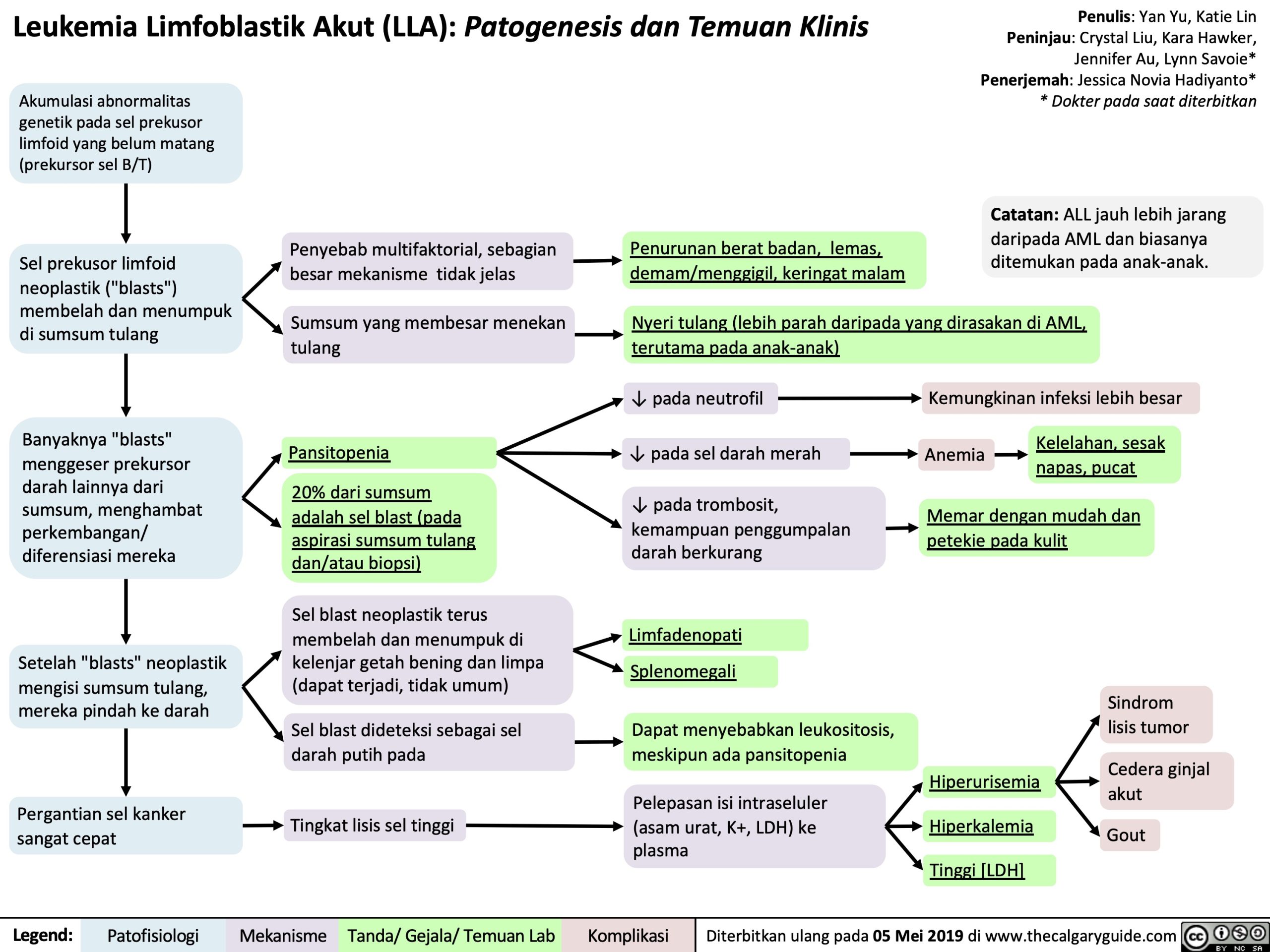
Myeloid vs. Lymphocytic Leukemia
Myeloid leukemia affects myeloid cells, which include various types of white blood cells (except lymphocytes), red blood cells, and platelets. Lymphocytic leukemia, on the other hand, specifically targets lymphocytes, a type of white blood cell crucial for immune function.
Types of Anemia: Exploring the Different Forms
Anemia is broadly categorized into two main types based on the underlying mechanism: hyperproliferative and hypoproliferative anemia.
Hyperproliferative Anemia
This form of anemia occurs when red blood cells are destroyed or lost too quickly. The body attempts to compensate by increasing red blood cell production, but it can’t keep up with the rate of loss.
Hypoproliferative Anemia
In hypoproliferative anemia, the bone marrow fails to produce enough red blood cells. This type is often associated with chronic diseases, including leukemia, which can impair the bone marrow’s ability to function properly.
Risk Factors and Causes of Leukemia and Anemia
While the exact causes of leukemia remain elusive, several risk factors have been identified. These include exposure to radiation or certain chemicals, previous cancer treatments, genetic syndromes, and some viral infections.
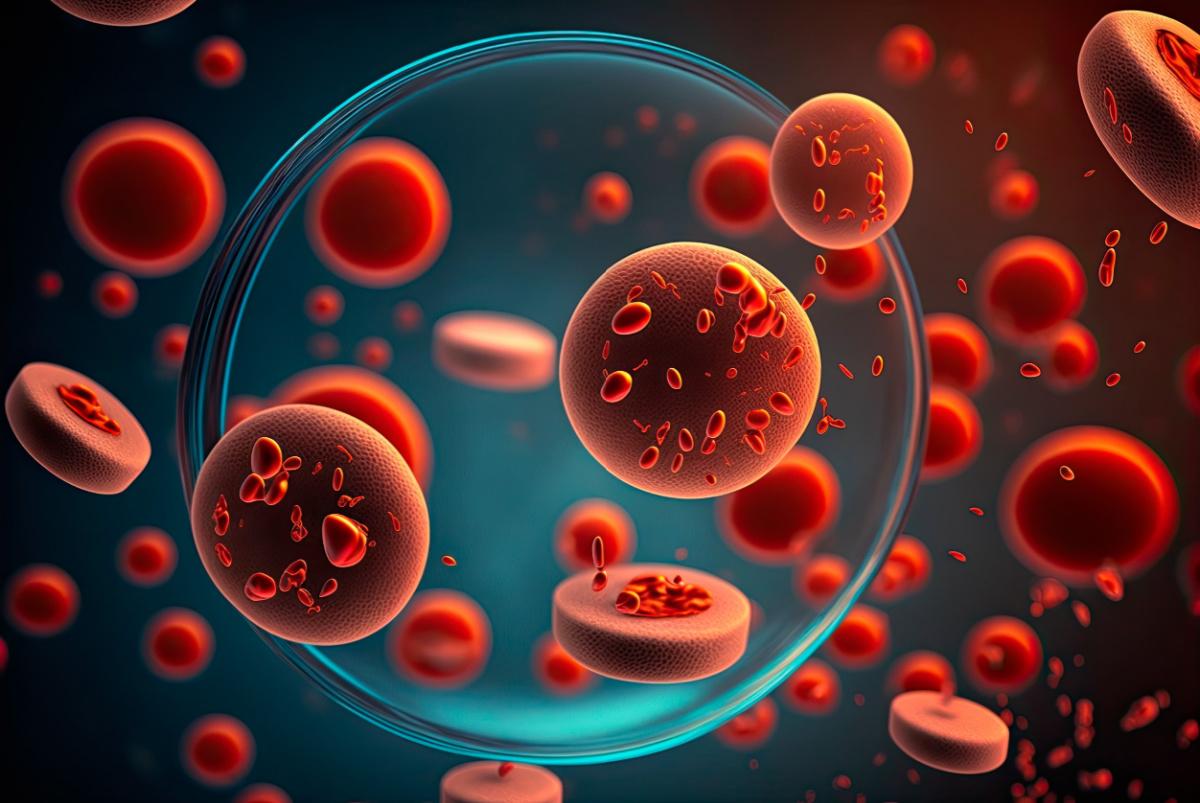
Anemia, on the other hand, has a wide range of potential causes. The most common cause in the general population is iron deficiency, accounting for about half of all cases. Other causes include nutritional deficiencies, chronic diseases, blood loss, and genetic disorders.
What are the main risk factors for leukemia?
- Radiation exposure
- Chemotherapy for previous cancers
- Exposure to benzene
- Certain viral infections (e.g., Epstein-Barr virus)
- Genetic syndromes (e.g., Down syndrome)
Common causes of anemia:
- Iron deficiency
- Vitamin B12 or folate deficiency
- Chronic diseases
- Blood loss
- Inherited disorders (e.g., sickle cell disease)
- Immune system issues
Recognizing Symptoms: Signs of Anemia and Leukemia
The symptoms of anemia and leukemia can vary widely, and in some cases, may overlap. It’s important to be aware of the potential signs of each condition to seek appropriate medical attention.
Anemia Symptoms
Anemia symptoms can range from mild to severe, depending on the extent of red blood cell reduction. Common signs include:

- Fatigue and weakness
- Shortness of breath
- Pale skin
- Dizziness
- Cold hands and feet
- Chest pain
- Irregular heartbeat
Leukemia Symptoms
Leukemia symptoms can vary depending on the type and stage of the disease. Some common signs include:
- Frequent infections
- Easy bruising or bleeding
- Fatigue and weakness
- Fever and night sweats
- Unexplained weight loss
- Bone or joint pain
- Swollen lymph nodes
Diagnosis and Treatment: Addressing Anemia and Leukemia
Proper diagnosis is crucial for effective treatment of both anemia and leukemia. While some diagnostic methods may overlap, each condition requires a specific approach.
Diagnosing Anemia
Anemia is typically diagnosed through blood tests, including a complete blood count (CBC) to measure red blood cell levels and hemoglobin concentration. Additional tests may be performed to determine the underlying cause of anemia.
Diagnosing Leukemia
Leukemia diagnosis often involves a combination of blood tests, bone marrow biopsy, and imaging studies. Genetic testing may also be used to identify specific types of leukemia and guide treatment decisions.

Treatment Approaches
Treatment for anemia depends on the underlying cause and may include dietary changes, iron supplements, vitamin B12 injections, or medications to stimulate red blood cell production. In severe cases, blood transfusions may be necessary.
Leukemia treatment is more complex and often involves a combination of chemotherapy, targeted therapy, immunotherapy, and stem cell transplantation. The specific treatment plan depends on the type of leukemia, its stage, and the patient’s overall health.
Living with Blood Disorders: Coping Strategies and Support
Dealing with a blood disorder like anemia or leukemia can be challenging, both physically and emotionally. Implementing effective coping strategies and seeking support can significantly improve quality of life for those affected.
Coping with Anemia
- Follow a balanced diet rich in iron and vitamins
- Get adequate rest and manage stress
- Engage in gentle exercise as advised by your doctor
- Attend regular check-ups and follow treatment plans
Coping with Leukemia
- Educate yourself about the disease and treatment options
- Join support groups or seek counseling
- Maintain open communication with your healthcare team
- Focus on overall wellness through diet, exercise, and stress management
- Consider complementary therapies like meditation or acupuncture
Both anemia and leukemia patients can benefit from building a strong support network of family, friends, and healthcare professionals. Open communication about needs and challenges can help ensure proper care and emotional support throughout the treatment journey.
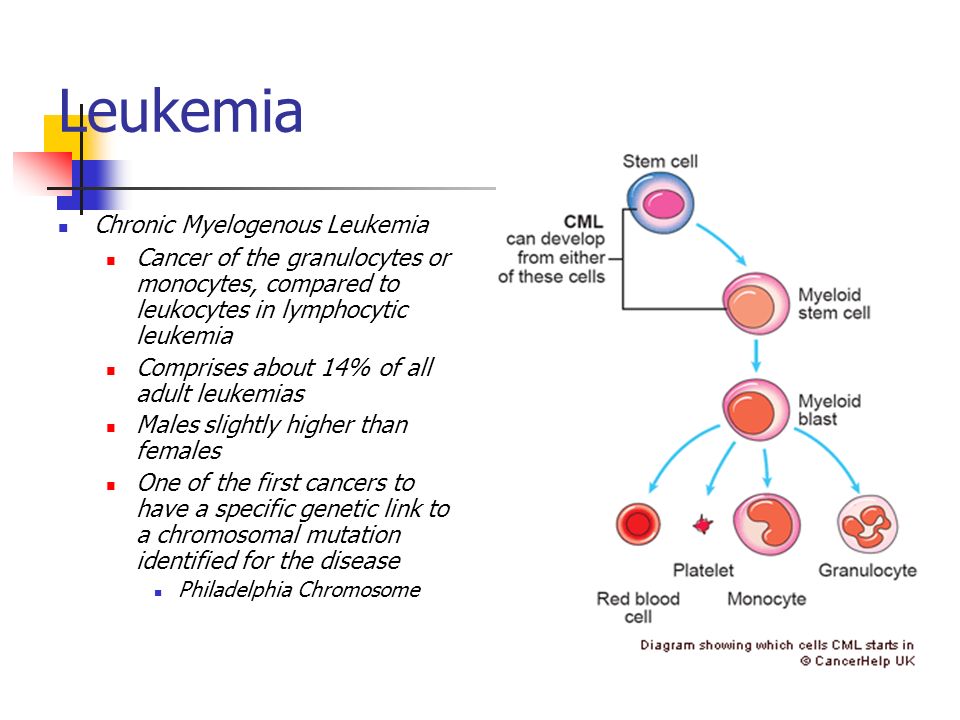
Advances in Research: New Horizons in Blood Disorder Treatment
The field of hematology is constantly evolving, with ongoing research offering new hope for improved treatments and outcomes for both anemia and leukemia patients.
Anemia Research
Recent advancements in anemia research include:
- Development of novel iron formulations for more effective supplementation
- Exploration of gene therapy for inherited anemias
- Investigation of new erythropoiesis-stimulating agents
- Studies on the role of gut microbiome in iron absorption
Leukemia Research
Exciting developments in leukemia treatment include:
- CAR T-cell therapy for certain types of leukemia
- Targeted therapies based on genetic mutations
- Immunotherapy approaches to enhance the body’s natural defenses
- Combination therapies to improve treatment efficacy
- Minimally invasive diagnostic techniques
These advances offer hope for more effective, personalized treatments with fewer side effects, potentially improving outcomes and quality of life for patients with blood disorders.

Prevention and Early Detection: Strategies for Blood Health
While not all cases of anemia and leukemia can be prevented, certain strategies can help maintain blood health and potentially reduce the risk of developing these conditions.
Preventing Anemia
- Consume a balanced diet rich in iron, vitamin B12, and folate
- Consider iron supplements if at risk for deficiency
- Manage chronic conditions that may lead to anemia
- Avoid excessive alcohol consumption
- Address any underlying causes of blood loss
Reducing Leukemia Risk
While leukemia prevention is more challenging, some steps may help reduce risk:
- Avoid exposure to benzene and other harmful chemicals
- Protect yourself from excessive radiation exposure
- Maintain a healthy lifestyle with regular exercise and a balanced diet
- Avoid smoking and limit alcohol consumption
- Be aware of family history and genetic risk factors
Importance of Regular Check-ups
Regular medical check-ups and blood tests can help detect anemia and leukemia in their early stages, potentially leading to more effective treatment outcomes. If you experience persistent symptoms or have risk factors for these conditions, consult with your healthcare provider for appropriate screening and evaluation.

By understanding the connection between anemia and leukemia, recognizing their symptoms, and staying informed about prevention and treatment options, individuals can take proactive steps towards maintaining their blood health and overall well-being. As research continues to advance, the future holds promise for even better management and outcomes for those affected by these blood disorders.
Anemia and leukemia: Connection explained
Anemia and leukemia are both conditions that affect a person’s blood. Although there is no evidence that anemia can cause leukemia, people with leukemia are more likely to develop anemia.
This could be because leukemia, a form of blood cancer, causes anemia, which involves a reduction in red blood cells. Moreover, some leukemia treatments also cause anemia.
This article focuses on two conditions: leukemia and anemia, which both affect the blood. After exploring the link between leukemia and anemia, this article will compare their types, causes, symptoms, diagnosis, and treatment.
A person develops cancer when some of their cells begin to grow unchecked. As a 2021 article explains, leukemia is a type of cancer that can affect cells in the blood and bone marrow.
While anemia is not a form of cancer, it can also affect the blood. A 2021 article describes anemia as a condition in which someone’s blood contains fewer red blood cells than it should.
There are different types of leukemia, and a common symptom is the rapid production of atypical white blood cells. These cells are not capable of fighting infection and impair the ability of the bone marrow to produce healthy cells, such as red blood cells. This can result in anemia.
Conversely, no current evidence suggests anemia can lead to leukemia. However, anemia and leukemia share links in other ways.
The American Cancer Society (ACS) notes that certain leukemia treatments, such as radiation therapy and chemotherapy, can lead to anemia in some people.
For example, evidence notes that low red blood cell counts are a common side effect of many leukemia treatments, particularly for individuals who require high-dose treatment.
While anemia and leukemia are very different conditions, they share a core similarity: they both affect the blood. But leukemia is a cancer, which involves unchecked cell growth.
In contrast, anemia involves a lack of red blood cells. That said, leukemia does remain a risk factor for anemia.
That said, leukemia does remain a risk factor for anemia.
The ACS explains that leukemia can present in many forms, including the below.
Acute vs. chronic leukemia
A person has acute leukemia when it affects younger, less mature cells. Chronic leukemia, by contrast, affects older cells. The condition heavily affects these older cells, despite being more mature. Additionally, acute leukemias also progress quickly, while chronic leukemias tend to develop slowly.
Myeloid vs. lymphocytic leukemia
This refers to the effect on the different types of blood cells. A person has lymphocytic leukemia when their cancer affects white blood cells known as lymphocytes. Myeloid leukemia instead affects myeloid cells, such as white blood cells other than lymphocytes, red blood cells, and platelets.
As a 2021 review explains, there are two main forms of anemia: hyperproliferative and hypoproliferative.
Hyperproliferative anemia
A person has this form of anemia when their red blood cells are lost or destroyed too quickly.
Hypoproliferative anemia
An individual has this form of anemia when their bone marrow does not produce enough red blood cells.
Because leukemia begins in the bone marrow, it can lead to hypoproliferative leukemia.
The exact causes of leukemia remain unknown and may vary with leukemia subtypes. However, scientists do know that certain things can make leukemia more likely. These risk factors for the condition include:
- radiation exposure
- exposure to chemotherapy from a previous cancer treatment
- exposure to benzene
- some viral infections, such as the Epstein-Barr virus
- some genetic syndromes, such as Down syndrome
Anemia also has many causes, which can include leukemia and some leukemia treatments. However, evidence notes that the most common cause in the general population is iron deficiency, which accounts for around 50% of all cases.
However, scientists have also identified many other causes of anemia, which can include:
- certain infectious diseases
- issues with the immune system
- sickle cell disease
- blood loss
- nutritional deficiencies
- absorption issues
Although anemia can be asymptomatic, this condition can significantly affect a person’s life. Evidence states that anemia symptoms can vary in severity, depending on a person’s red blood cell count. These symptoms can include:
Evidence states that anemia symptoms can vary in severity, depending on a person’s red blood cell count. These symptoms can include:
- tiredness or lethargy
- weakness
- restlessness
- a reduced ability to exercise
- chest pain
- shortness of breath
- pale skin
- pica, where people wish to eat nonedible items
- a fast or irregular heartbeat
- cold hands or feet
Leukemia can cause a person to experience symptoms of anemia. Additionally, while symptoms can vary by type, a 2021 article lists the following as symptoms of leukemia:
- bleeding
- bruising
- fevers
- skeletal problems
- lymphadenopathy
- enlarged liver or spleen
- frequent infections
- fatigue
- night sweats
Diagnosing leukemia can differ depending on the type and symptoms a person is experiencing. Typically, a doctor can diagnose the condition after analyzing an individual’s blood. Therefore, they may order several tests to help with diagnosis, which may include:
- a complete blood count
- peripheral blood smear
- flow cytometry
- a bone marrow biopsy
- a liver function test
- a complete metabolic panel
Similarly, diagnosing anemia can also differ depending on the type and the underlying cause. It usually involves taking a blood sample and measuring for a protein in the blood called hemoglobin.
It usually involves taking a blood sample and measuring for a protein in the blood called hemoglobin.
Some guidelines suggest that the normal hemoglobin range for females is 12–16 grams per deciliter of blood (g/dl) and 14 to 17.4 g/dL for males. However, many factors can affect hemoglobin levels. Usually, values lower than the above may indicate anemia.
Additionally, other tests may include:
- complete blood count
- ultrasounds
- X-rays
- CT scans
- endoscopy
- colonoscopy
- laparotomy
A 2021 article states that treatment for leukemia can vary from individual to individual, depending on the leukemia type and any other health conditions a person has. That said, chemotherapy remains a highly common treatment option. Doctors may also recommend:
- stem cell transplants
- monoclonal antibodies
- radiation therapy
Anemia treatments feature a similar variability of approaches. Scientists understand that a person’s anemia needs treatment that focuses on its underlying cause.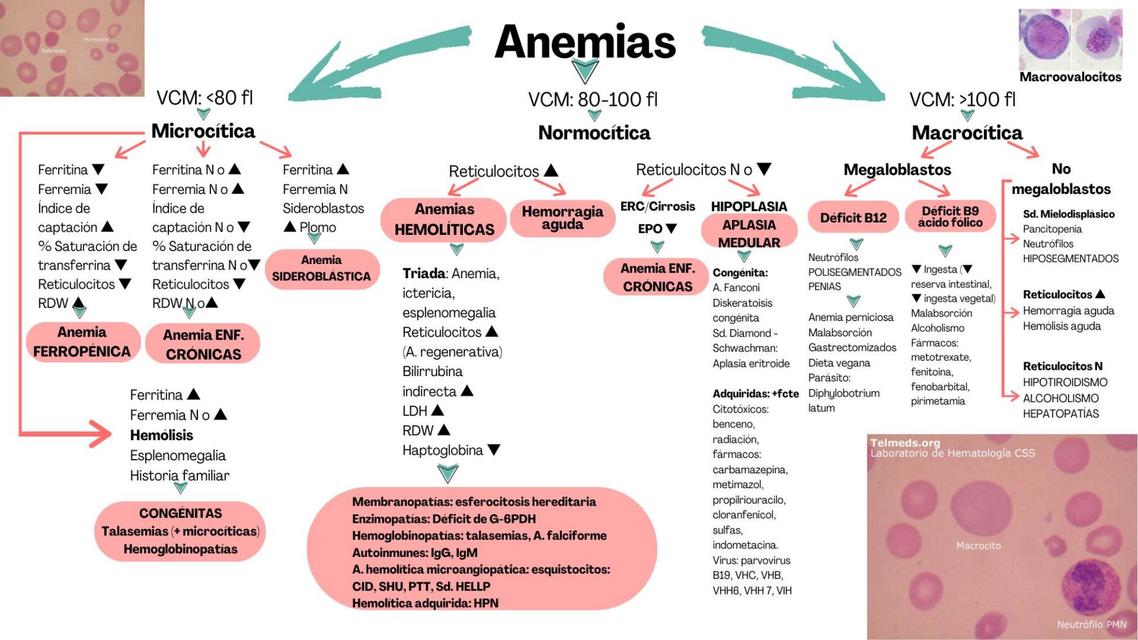 For instance, doctors may prescribe iron supplements if someone has the condition because they do not get enough dietary iron.
For instance, doctors may prescribe iron supplements if someone has the condition because they do not get enough dietary iron.
The ACS notes that iron supplements may also be helpful if cancer is causing the anemia. Other anemia treatments for people with cancer include red blood cell transfusions and erythropoiesis-stimulating agents — drugs that promote red blood cell growth.
Anemia and leukemia are both conditions that affect the blood. Moreover, people with the latter have an increased risk of developing anemia. However, anemia cannot cause leukemia, and these conditions remain different in several important respects.
Anemia and Leukemia: How Are They Linked?
GettyImages/PORNCHAI SODA
Anemia and leukemia both involve abnormal production of cells in the bone marrow, the spongy inner layer of your bones. This is where red and white blood cells are made. In anemia, there’s a decrease in red blood cell production. However, leukemia causes abnormal production of various blood cells − depending on the type of leukemia.
However, anemia and leukemia are also two distinct conditions.
Anemia is a blood disorder characterized by a deficiency of red blood cells or hemoglobin. This can cause fatigue, pale skin, and other symptoms like shortness of breath and weakness.
Leukemia is a type of cancer characterized by abnormal production of blood cells. These abnormal cells crowd out healthy cells, leading to an imbalance in the composition of your blood. The type of leukemia is based on the type of blood cell that’s affected.
Though the two conditions are not directly related, they share some overlapping characteristics and may be linked in some instances. We spoke to Cynthia Wetmore, MD, PhD, a scientific officer and medical advisor for Florence Healthcare, to learn more.
How Does Leukemia Resemble Anemia?
“A common sign of leukemia is either increased or decreased blood cell counts that may include red blood cells, white blood cells, and platelets,” Dr. Wetmore said. “Often, if the leukemia cells are growing in the bone marrow, it can crowd out production of the other types of cells.
According to Dr. Wetmore, leukemia can resemble anemia when red blood cells are affected by cell crowding − causing a below-normal number of red blood cells in the bloodstream.
Can Anemia Lead to Leukemia?
There are several potential causes of anemia, including deficiencies in iron or vitamin B12, chronic diseases, and inherited blood disorders that affect the red blood cell membrane. Leukemia, however, is not one of them.
“Anemia cannot cause leukemia but could be a sign of bone marrow that’s not producing enough red blood cells,” Dr. Wetmore explained. “This requires an investigation (lab tests) into the cause of low numbers of red blood cells.”
Can Leukemia Treatments Lead to Anemia?
Yes. In many cases, leukemia treatment may cause anemia.
“Most treatments for leukemia lead to a decrease in the other types of blood cells, including platelets and red blood cells,” Dr. Wetmore noted. In the case of acute leukemias, “traditional chemotherapy or other newer types of immunotherapy intended to attack the malignant leukemia cells can also result in a decrease in the red blood cells and platelets.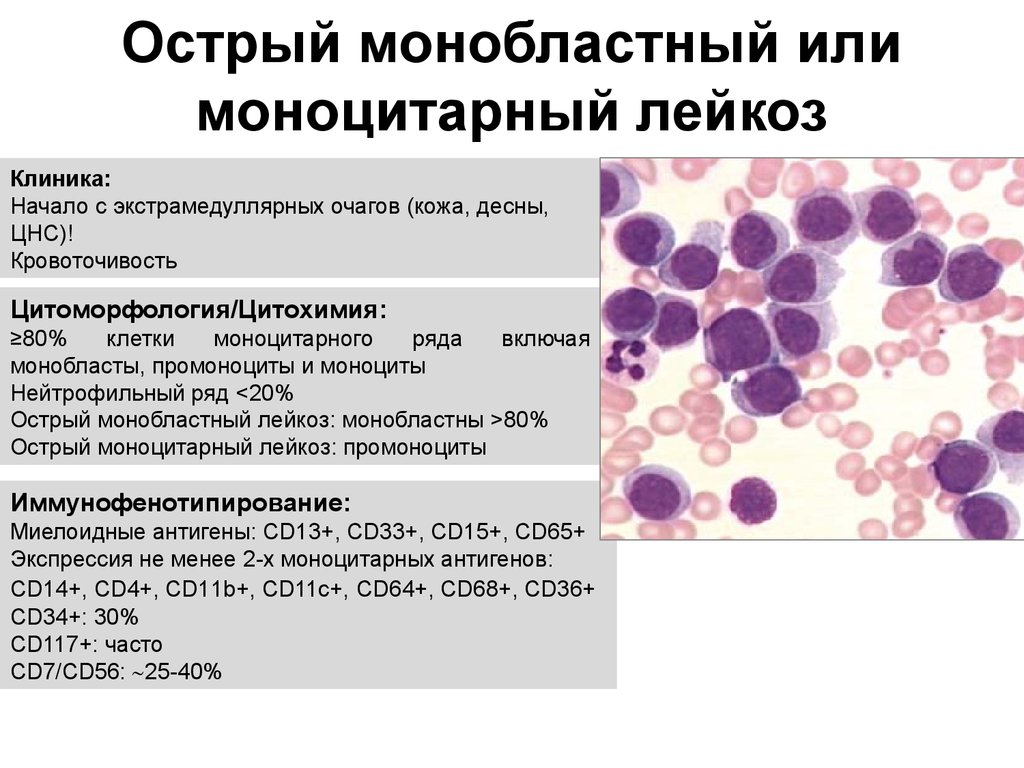 ”
”
The most common symptoms of anemia include:
Fatigue
Weakness
Shortness of breath
Chest pain
Craving abnormal substances (such as dirt or clay)
Pale or cool skin
Low blood pressure
Leukemia vs. Anemia: Similarities and Differences
While both conditions involve abnormal production of cells in the bone marrow, they are distinct disorders with their own sets of symptoms and treatments.
Similarities
Both involve abnormal production of cells in the bone marrow.
Both can cause fatigue and pale skin.
Differences
Leukemia is a type of cancer, while anemia is a blood disorder.
Leukemia can affect all types of blood cells, while anemia affects red blood cells.
Anemia can be caused by a deficiency in iron or vitamin B12, chronic diseases, and inherited blood disorders.
 Leukemia is caused by damage to the DNA in the bone marrow cells that affect blood cell production.
Leukemia is caused by damage to the DNA in the bone marrow cells that affect blood cell production.The conditions involve different treatment protocols and therapies.
Treatments
Both anemia and leukemia can be treated, depending on the underlying causes. Iron deficiency anemia is generally treated with dietary changes or supplements to help raise the body’s levels of red blood cells.
Acute forms of leukemia, such as acute lymphoblastic leukemia (ALL) and acute myeloid leukemia (AML) are typically treated with chemotherapy, radiation therapy, or other newer types of immunotherapy to destroy cancerous cells. In some cases, a bone marrow transplant may be recommended to replace the damaged bone marrow cells with healthy ones. However, treatments for chronic leukemias, such as chronic lymphocytic leukemia (CLL) and chronic myeloid leukemia (CML), can include targeted therapy, immunotherapy, and chemotherapy in some cases, but depend on a variety of factors.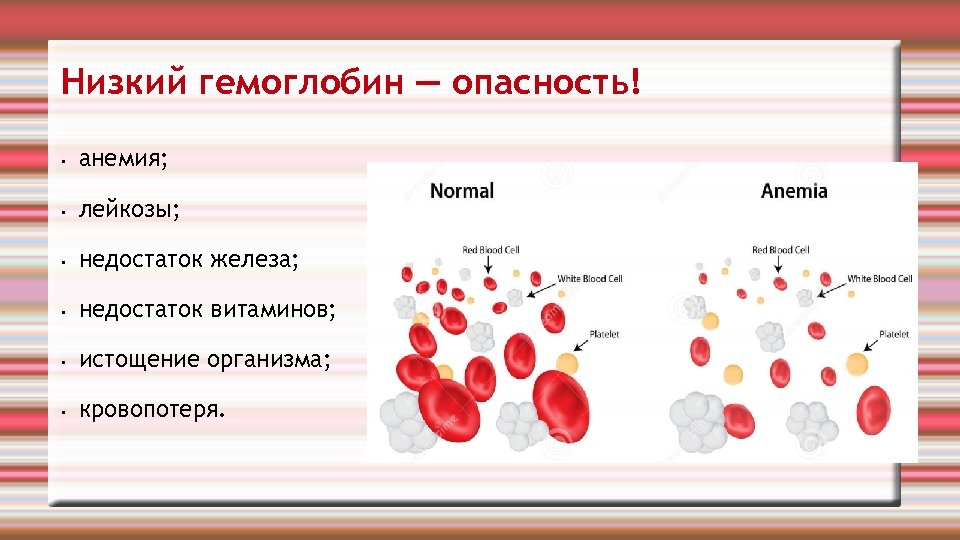
The outlook for anemia and leukemia depends on multiple factors, including the severity of the condition and how quickly medical intervention is sought. Early diagnosis and treatment are key to reducing symptoms and improving outcomes. Speak with your doctor if you have any concerns about your symptoms or treatment plan.
Our Review ProcessLindsay Modglin, Medical Writer:
Lindsay Modglin is a professional medical writer and editor with 9+ years of clinical healthcare knowledge. She graduated from Ivy Tech in Indiana for nursing and has since received a professional certificate in scientific writing from Stanford. She also holds a handful of professional certifications in writing, SEO, and content marketing. Her byline has appeared in Forbes, Insider, Verywell, Parents, and Healthline—along with many other digital and print publications.
Sangeetha Venugopal, MD, MS, Hematology Oncology Specialist:
Dr.Venugopal has presented several abstracts at the annual American Society of Hematology, American Society of Clinical Oncology meeting and the European Hematology Association meeting.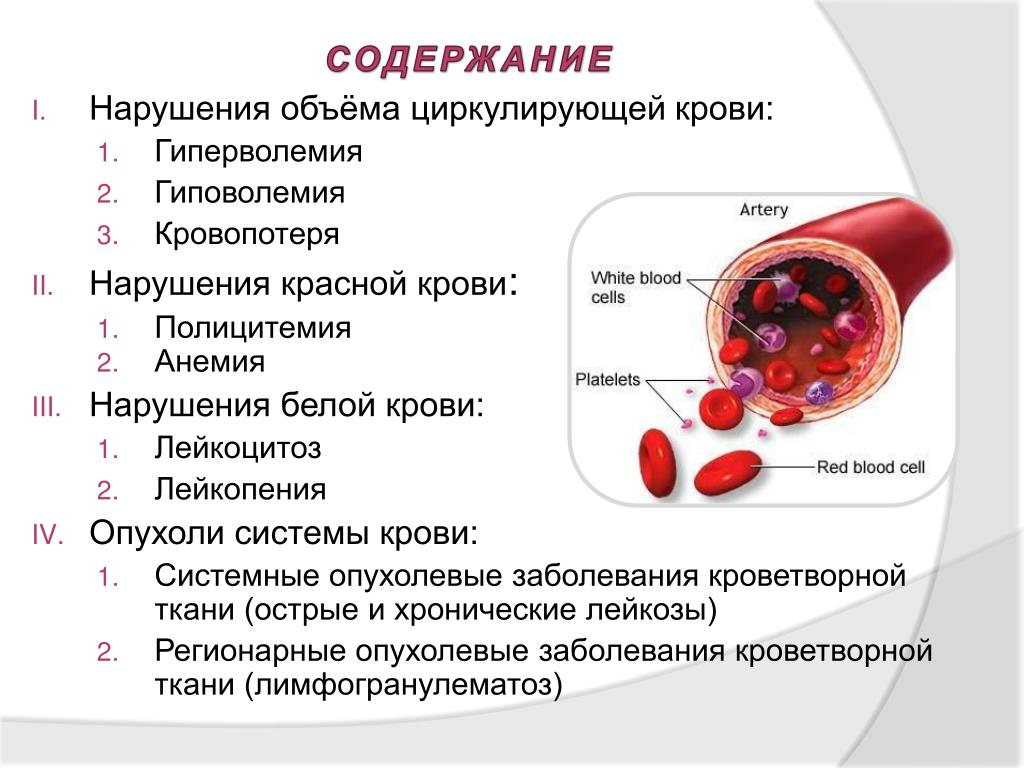 Dr.Venugopal was awarded the 2021 ASCO merit award from the conquer cancer foundation for high ranking abstracts and 2021 ASH award for outstanding abstract.
Dr.Venugopal was awarded the 2021 ASCO merit award from the conquer cancer foundation for high ranking abstracts and 2021 ASH award for outstanding abstract.
Leukemia – Docrates
Leukemia is the most common cancer in children. It is not a hereditary disease, but sometimes it can be diagnosed in representatives of several generations of the same family. In some hereditary or congenital diseases, the mechanism for the restoration of genetic material (DNA) is impaired, and the risk of acute leukemia is significantly increased.
According to the nature of the course of the disease, leukemia is divided into two main forms: acute and chronic.
Acute leukemia (acute leukemia) is divided into acute myeloid leukemia (acute myeloid leukemia, acute myeloid leukemia, acute myeloblastosis) and acute lymphoblastic leukemia. These forms, in turn, also have separate subtypes.
Speaking of chronic leukemia, the two most common forms should be mentioned: chronic lymphoblastic leukemia (the most common type of leukemia, about 150 diagnosed cases per year) and chronic myeloid leukemia. Rarer chronic forms of leukemia include T-cell prolymphocytic leukemia, hair cell leukemia, and large granular leukemia.
Rarer chronic forms of leukemia include T-cell prolymphocytic leukemia, hair cell leukemia, and large granular leukemia.
Today, there are advanced methods of treatment for leukemia and found effective ways to treat various forms of this disease. Chronic myeloid leukemia was the first type of blood cancer to be treated with a complex of targeted treatments, thanks to which, in most cases, the course of leukemia can be controlled and remission achieved. The prognosis for recovery of patients with this type of leukemia has improved significantly. In the treatment of other types of leukemia with chemotherapy and antibodies combined with it, positive results are achieved, and transplantation of stem cells taken from healthy people (allogeneic stem cell transplantation, bone marrow transplantation) is increasingly giving positive results.
Risk factors for leukemia
The cause of leukemia is usually not known. It is known, however, that if a patient has previously been diagnosed with another type of cancer, this can in some cases provoke leukemia (secondary leukemia). Another cause of leukemia can be various genetic disorders. In chronic myeloid leukemia (chronic myelogenous leukemia) in the earliest precursor of blood cells, the stem cell, due to the replacement of 9and 22 chromosomes, a mutant (Philadelphia) chromosome is formed, which causes blood cancer. The causes of other types of leukemia have not been sufficiently studied to date. Certain factors, such as ionizing radiation, exposure to solvents (especially benzene) and other chemicals, certain types of chemotherapy, certain viruses, and rare hereditary and congenital diseases, increase the risk of leukemia.
Another cause of leukemia can be various genetic disorders. In chronic myeloid leukemia (chronic myelogenous leukemia) in the earliest precursor of blood cells, the stem cell, due to the replacement of 9and 22 chromosomes, a mutant (Philadelphia) chromosome is formed, which causes blood cancer. The causes of other types of leukemia have not been sufficiently studied to date. Certain factors, such as ionizing radiation, exposure to solvents (especially benzene) and other chemicals, certain types of chemotherapy, certain viruses, and rare hereditary and congenital diseases, increase the risk of leukemia.
Symptoms of leukemia
The symptoms of leukemia are very different and usually appear in the acute form of leukemia. Chronic leukemia can be asymptomatic for a long time, even for many years, and be diagnosed only on the basis of a routine blood test (this is especially true for chronic lymphoblastic leukemia). In acute leukemia, symptoms most often occur due to a lack of blood cells (due to anemia, infections, and bleeding), an increase in the viscosity of leukemia cells, or due to organ dysfunction caused by leukemia cells.
Chronic forms of leukemia may be accompanied by similar, although more diffuse, long-term symptoms. In addition, there may be an increase in body temperature in the absence of infection, weight loss, and heavy sweating at night. In some cases, symptoms may be caused by enlarged lymph nodes or the spleen.
Most often, with the above symptoms, anemia (lack of red blood cells) is diagnosed, in which the hemoglobin level drops below normal, low white blood cells (white blood cells) in acute forms of leukemia and high white blood cells in chronic forms, as well as a decrease in platelets in the blood. Anemia is manifested by fatigue, pallor, palpitations, tinnitus, and general malaise. A low platelet count causes a tendency to bleed, which manifests itself, for example, in the form of spontaneous bruising, epistaxis, bleeding gums, and prolonged bleeding of wounds. Decreased levels of white blood cells lead to increased susceptibility to infections. Although white blood cells increase in the blood in chronic forms of leukemia, the level of healthy white blood cells in the bone marrow and blood decreases, which can lead to increased susceptibility to infections.
Diagnosis of leukemia
In acute leukemia, symptoms appear quickly enough that the patient needs to see a doctor. The disease is diagnosed using laboratory tests based on changes in the blood picture. Chronic leukemia is often found incidentally on a routine blood test. Based on the blood test, it is possible to trace the increase in the level of leukocytes in the long-term dynamics. In Finland, to confirm the diagnosis of leukemia and determine the type of leukemia, special studies are carried out in the hematology department of a university hospital. A bone marrow biopsy is done: the doctor makes a puncture with a special needle and takes several samples of the bone marrow for analysis. To make a diagnosis and determine the general condition of the body, many different laboratory blood tests are needed.
In acute forms of leukemia, immature blast cells are found in the blood and bone marrow. In chronic forms of leukemia, leukemic cells are similar to healthy ones, but are present in the blood in much larger quantities. Determination of surface markers of leukemia cells makes it possible to make an accurate diagnosis in the shortest possible time. Chromosomal and genetic studies confirm the accuracy of the diagnosis and often make it possible to predict the course of the disease. Possible chromosomal and genetic changes can also be taken into account when monitoring the patient’s response to treatment.
Determination of surface markers of leukemia cells makes it possible to make an accurate diagnosis in the shortest possible time. Chromosomal and genetic studies confirm the accuracy of the diagnosis and often make it possible to predict the course of the disease. Possible chromosomal and genetic changes can also be taken into account when monitoring the patient’s response to treatment.
Treatment of leukemia
Treatment of leukemia is carried out under the supervision of a hematologist. In Finland, patients with acute forms of leukemia are usually referred for treatment at the hematology department of a university hospital. Therapy of chronic forms can also be carried out in the hematology departments of other medical institutions: treatment is usually carried out on an outpatient basis, hospitalization is not required. The standard treatment for leukemia includes various chemotherapy drugs, sometimes combined with antibodies that recognize cancer cells. Along with this, supportive therapy is carried out, for example, taking blood products, antibiotics, medicines for nausea, drugs that protect the mucous membrane of the gastrointestinal tract and kidneys.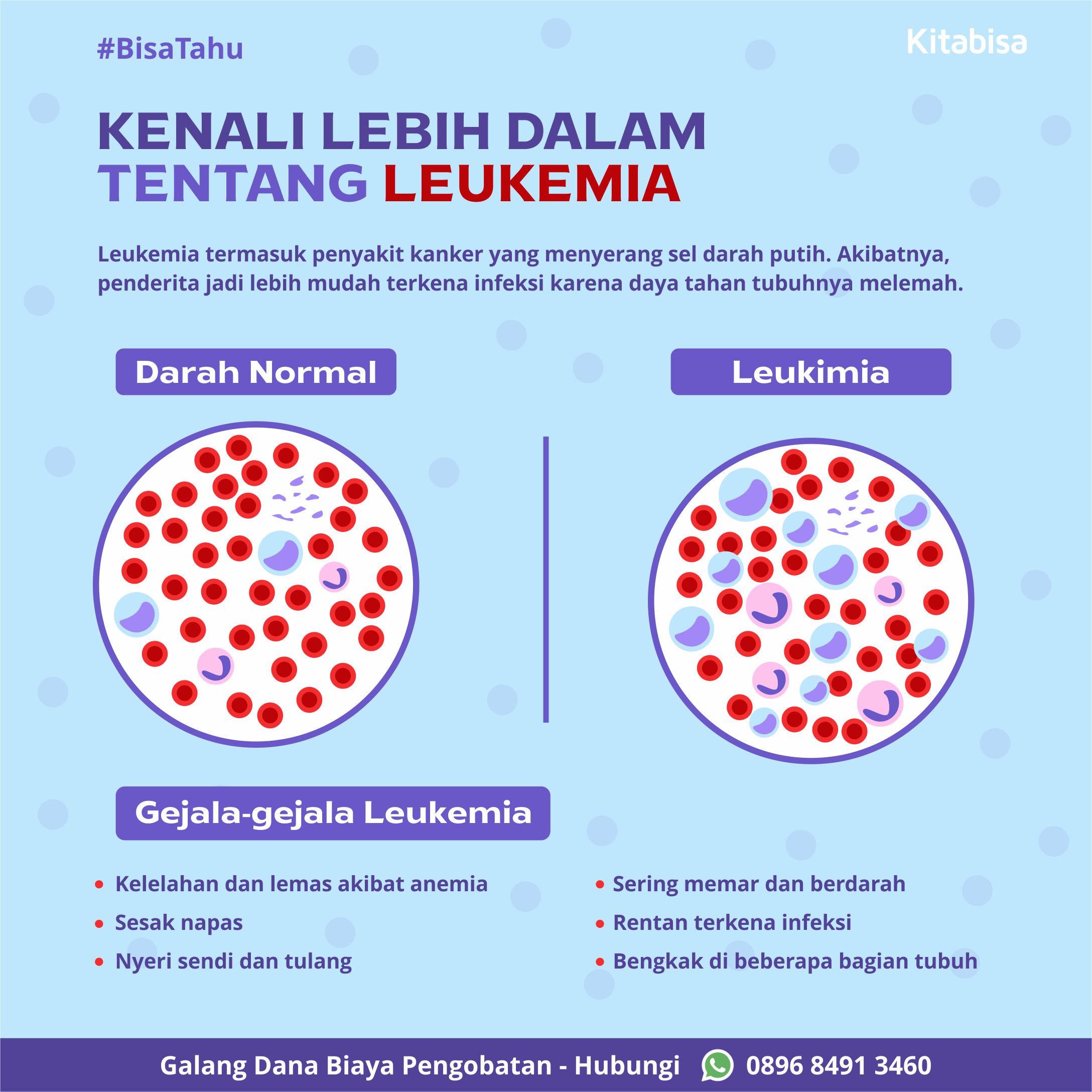
In acute forms of leukemia, the patient first receives a large dose of chemotherapy (induction therapy) in order to remove leukemic cells from the blood of the bone marrow (to achieve the so-called morphological remission). With a positive result of this stage of treatment, various types of therapy are carried out to improve the body’s response to treatment, in medical language called consolidation therapy. If these methods fail to cure leukemia, or if it recurs, a donor stem cell transplant (allogeneic transplant) may be considered. Finding a suitable donor is a difficult task, as the donor and the patient must have identical tissue types. The siblings of the patients are most often matched as donors, but a suitable donor can also be found in the relevant volunteer registry. The search is based on the Finnish Stem Cell Donor Registry, administered by the Finnish Red Cross. There are about 22,000 volunteers on the register. Finnish doctors also have similar foreign registries at their disposal, the total number of potential donors in which is about 22 million people.
Stem cell transplantation is a very complex procedure, and some patients cannot do it. In some cases, this procedure can lead to death. Death can occur due to the toxicity of the procedure, possible rejection of foreign cells, and relapse of the disease.
Relapsing leukemia is common in adult patients. Most children with leukemia recover. With modern treatment, the most common form of childhood leukemia, acute lymphoblastic leukemia, can be cured in more than 80% of cases.
Leukemia vs Anemia: Difference and Comparison
Both anemia and leukemia are blood related diseases. Anemia occurs when the level of hemoglobin in the blood falls below the reference standard for age and sex.
Science quiz
Test your knowledge on science-related topics
1 / 10
The first link in all food chains is –
Herbivores
Carnivores
Green plants
All of the above
2 / 10
Which of the following is used in pencils?
Graphite
silicon
Coal
Phosphorous
3 / 10 2 carbon
sulfur
oxygen
4 / 10
A chemical reaction with the release of energy is called :
endothermic
exothermic
5 / 10
Galvanized iron sheets coated
lead
chrome
zinc
can
6 / 10
Washing soda is a generic name
Sodium carbonate
Calcium bicarbonate
Sodium bicarbonate
Calcium carbonate
7 / 10
DNA carries the instructions for the growth of an organism.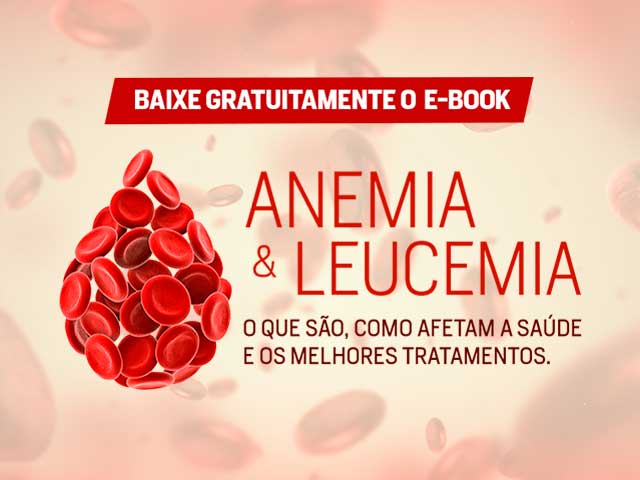 DNA means…..
DNA means…..
Deoxyribose nucleic apple
Deoxyribose nucleic apparatus
Deoxyribonucleic acid
Deoxyribonucleic acid
8 / 10
Which of the following organisms breathes through the skin?
Snake
Worm
Monkey
Humans
9 / 10
Which of the following glands is located in the human mouth?
Adrenal
Pituitary
Sexual
salivary
10 / 10
Which of the following compounds is mainly used in hand sanitizers?
Aldehyde
Acetic acid
Alcohol
Ketones
your bill
Anemia is characterized by a hemoglobin concentration two standard deviations below the mean for your age or sex.
Anemia is a symptom of another disease, not a disease in itself. Leukemia is a disease in which malignant stem cells proliferate into the bone marrow in clones.
When more than 25% of blast cells are found in a bone marrow aspirate, this indicates the presence of leukemia.
Key findings
- Leukemia is a cancer of the blood-forming tissues, and anemia is a condition in which there are not enough healthy red blood cells in the blood.
- Genetic mutations and other factors cause leukemia, while anemia can be caused by various causes such as iron, vitamins and blood loss.
- Treatment for leukemia may include chemotherapy, radiation, or stem cell transplantation, while treatment for anemia depends on the underlying cause and may include supplements or blood transfusions.
Leukemia against anemia
Leukemia and anemia are diseases of the blood. Leukemia is a type of cancer that affects the body’s ability to produce healthy white blood cells, while anemia is characterized by the absence of healthy red blood cells or hemoglobin.
Leukemia is a malignant neoplasm that affects the blood and bone marrow and is caused by an excess production of abnormal white blood cells.
The production of red blood cells and platelets within the bone marrow is damaged by these aberrant white blood cells, which are unable to fight infection.
Acute and chronic leukemia are two types of leukemia.
Anemia is a condition in which there are not enough healthy red blood cells in the body.
A low level of red blood cells means that the amount of oxygen in the blood is less than it should be, since red blood cells supply oxygen to all body tissues.
Reduced oxygen transport to critical body tissues and organs is the source of many of the symptoms of anemia.
Comparison table
| Comparison parameters | Leukemia | anemia |
|---|---|---|
| Causes | Characterized by an excess of white blood cells, fewer platelets and fewer red blood cells. | Characterized by low production of red blood cells. |
| Severity | Fatal cancer. | Non-fatal condition. |
| Treatment | It is difficult to treat. | Heals quickly. |
| symptoms | No definitive cause. | Blood loss, blood cell death, poor RBC synthesis and fluid overload. |
| Diagnostic process | Diagnosed by bone marrow biopsy. | Diagnosed by complete blood count (CBC) and peripheral blood smear. |
What is Leukemia ?
Leukemia is a malignant neoplasm of the blood and bone marrow. Cancer is described as an uncontrolled proliferation of aberrant cells in simple terms.
Cancer can strike at any time and in any part of the body. This rapid uncontrolled development of aberrant cells occurs in the bone marrow in leukemia.
These aberrant cells subsequently enter the circulatory system.
Leukemia, unlike other malignant neoplasms, rarely forms a tumor that can be detected using imaging techniques such as x-rays.
Leukemia comes in many forms. Some of them are more common among young people, while others are more common among adults. The type of leukemia and other variables determine treatment.
Leukemia is divided into two types depending on how quickly the disease develops.
Acute leukemia and chronic leukemia are two types of leukemia. Leukemia cells divide rapidly, and the disease advances rapidly. A person with acute leukemia will become ill within a few weeks of developing leukemic cells.
The most common malignant neoplasm in children is acute leukemia. In chronic leukemia, cells often have characteristics of both immature and adult cells.
Some of these cells may have evolved to the extent that they function like the cells they were designed for, but not to the extent of their normal counterparts.
Unlike acute leukemia, the disease usually progresses slowly.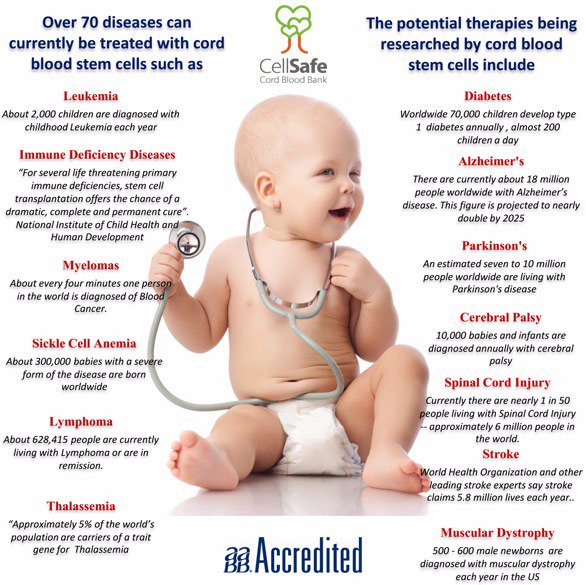 It is possible that a person may not notice any symptoms for years if they have chronic leukemia.
It is possible that a person may not notice any symptoms for years if they have chronic leukemia.
Adults are more likely than children to develop chronic leukemia.
What is anemia?
Anemia is defined as a lack of red blood cells or hemoglobin in the blood. Anemia is a condition in which there are not enough healthy red blood cells in the bloodstream.
The most common type of anemia is usually fairly harmless. On the other hand, anemia can sometimes be the first sign of cancer or other serious illness.
Anemia is a common side effect of life-saving cancer drugs in other settings.
Anemia caused by cancer therapy is a huge burden that can lead to excessive exhaustion. There are several types of anemia, each with its own unique set of causes.
Anemia may be transient or chronic, moderate to severe. A combination of factors usually causes anemia.
Dietary iron, B-12 vitamins, and folic acid are essential for the maturation of red blood cells in the body.
Every day, 0.8 to 1% of red blood cells in the body are replaced, and the average lifespan of red blood cells is 100 to 120 days.
Anemia can be caused by any mechanism that disturbs the balance between the formation and destruction of red blood cells. The diagnosis of anemia can vary depending on the type and underlying cause.
This usually entails collecting a blood sample and testing for hemoglobin, a protein found in blood. Leukemia patients are often prone to developing anemia along with root disease.
Key Differences Between Leukemia and Anemia
- Anemia is a condition characterized by a low production of red blood cells, while leukemia is a malignancy and destruction of the bone marrow characterized by an excess of white blood cells, fewer platelets, and fewer red blood cells.
- Anemia is not a fatal condition, but leukemia is because it is a malignant neoplasm of the blood.
- Anemia is easily treated, but leukemia is difficult to treat.


 Leukemia is caused by damage to the DNA in the bone marrow cells that affect blood cell production.
Leukemia is caused by damage to the DNA in the bone marrow cells that affect blood cell production.